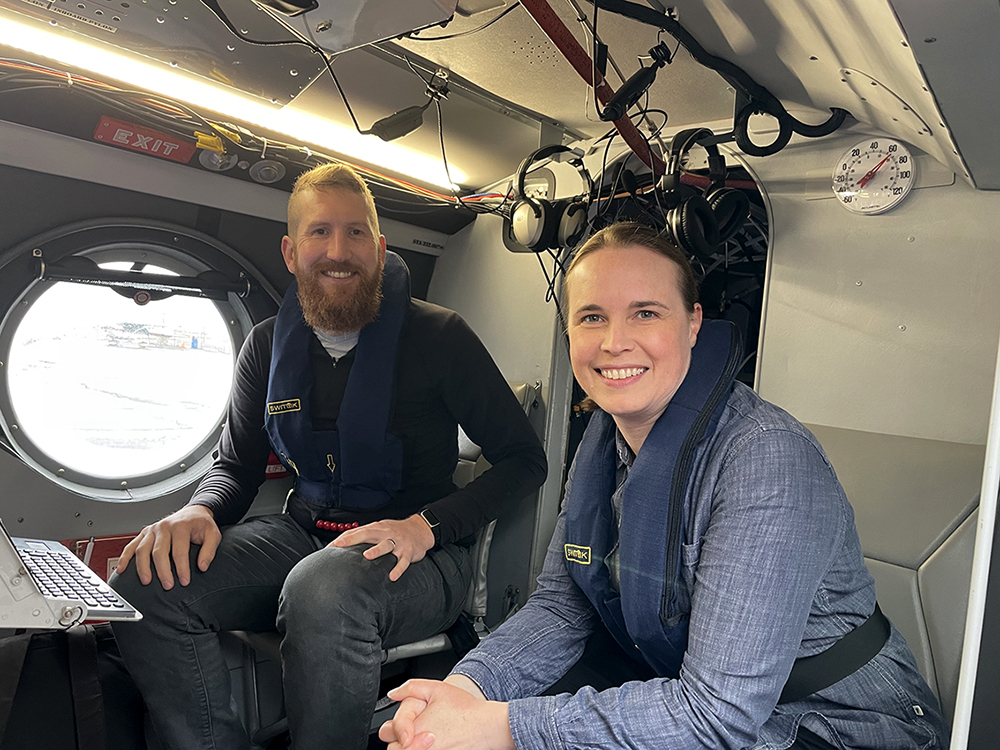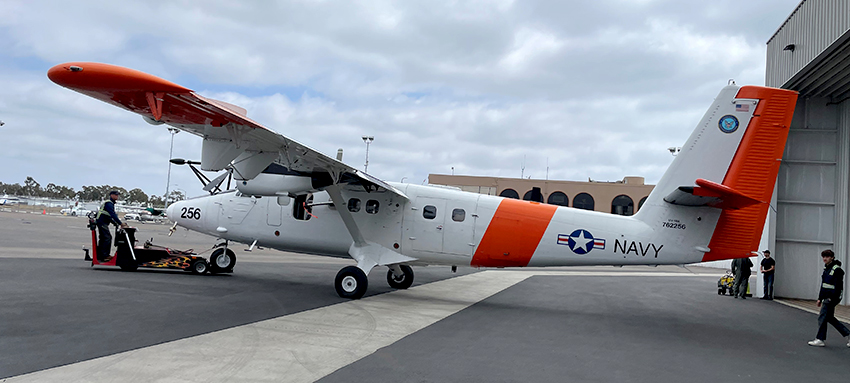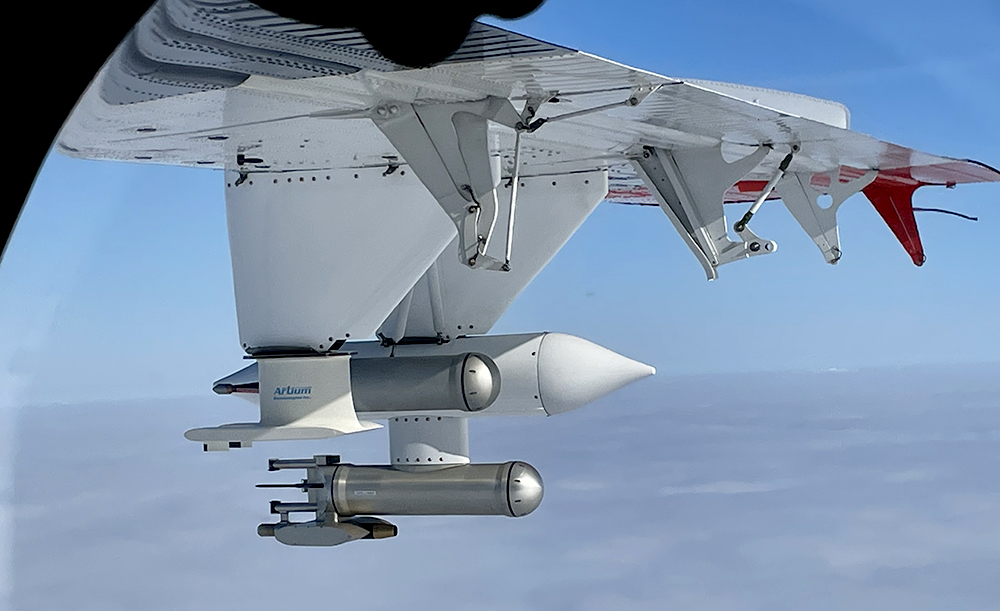Cloud data collected in-situ will be evaluated on the ground at Purdue
08-03-2023
Lisa Welp has been granted DOE funding to conduct atmospheric research critical to understanding clouds that shield Earth from damaging effects of heat

Dr. Lisa Welp, seen above with Dr. Mikael Witte, participated in an airborne field campaign studying clouds off the coast of San Diego. She has had her research awarded by the Department of Energy to support Atmospheric System Research (ASR). Photo by Dr. Patrick Chuang.
This summer, the skies were abuzz with planes conducting atmospheric research. Dr. Lisa Welp participated in an airborne field campaign studying clouds off the coast of San Diego in June. She is an Associate Professor in the Purdue University Department of Earth, Atmospheric, and Planetary Sciences (EAPS) and co-lead of the Water Challenges research community in Purdue’s Institute for a Sustainable Future (ISF). Her atmospheric research data collection and analysis has been awarded funding by the United States Department of Energy (DOE).
The DOE has announced $15.3M in funding for a total of 24 projects that will be associated with their Atmospheric System Research (ASR) program. Welp’s project, titled “Using Water Stable Isotopes to Quantify the Roles of Entrainment, Drizzle, and Aerosols in Determining Marine Stratocumulus Properties” has been selected as one of these projects. These projects are supported by the DOE’s Office of Science, through the Biological and Environmental Research (BER) program as part of the ASR program.
Welp participated in the Southern California Interactions of Low cloud and Land Aerosol (SCILLA) airborne experiment which is sponsored by the Office of Naval Research (ONR) and DOE. The team included researchers from the Naval Postgraduate School, University of California Santa Cruz, University of California Riverside, Purdue University and Clemson University. The team conducted 21 research flights off the coast of San Diego to investigate how marine stratocumulus clouds form and burn off.
“Clouds are a frequent occurrence along the southern California coast in early summer months, which are given the nicknames ‘May grey’ and ‘June gloom’,” says Welp. “Cloud formation depends on small particles (aerosols) for water to condense on. Cloud dissipation happens when the air warms up, reducing condensation, mixing drier air from higher up in the atmosphere down into the moist cloud layer air, and drizzle/rain falling out of the cloud layer.”


According to Welp, the researchers hypothesize that air pollution from Los Angeles mixes into the marine cloud layer off the coast partly due to the coastal mountains and shape of the coastline influencing wind direction and atmospheric mixing.
“Stratocumulus cloud processes are critical to understand because they are highly reflective clouds that shield the surface from the sun’s heat, damping the effects of climate change from human-released heat-trapping gases,” she says.
The data collected in air from many different sensors measuring cloud droplet number and size, water vapor stable isotopes, aerosol number and chemical composition, and standard air temperature and wind properties will be analyzed on the ground. Welp’s funding award will use the observation data she collected during SCILLA to better understand the interface between the cloud layer and dry air above. Her team hopes to determine how the dry air dehydrates the cloud layer and mixes cloud nucleating particles into it. The analysis also aims to estimate how much water is removed from the cloud layer by drizzle formation.
Welp’s team will consist of her collaborator at UC Santa Cruz (Dr. Patrick Chuang, an expert in cloud microphysics) and a new postdoc at Purdue University who will be hired to conduct this research. The team will use water vapor stable isotopes and cloud droplet information to resolve climate related questions.
“This knowledge will improve climate model representations of potential future warming scenarios,” says Welp.
Projects for ASR were selected by the DOE through a competitive peer review under DOE Funding Opportunity Announcement DE-FOA-0002850, sponsored by BER within DOE’s Office of Science.
“The goal of ASR research is to improve understanding of Earth’s key cloud, aerosol, precipitation, and radiation processes,” says Shaima Nasiri, ASR’s Program Manager. “ASR funding ensures that we continue to develop a strong understanding of atmospheric processes in the Earth system and the critical role they play as we face the challenges of a changing climate.”
About the Department of Earth, Atmospheric, and Planetary Sciences at Purdue University
The Department of Earth, Atmospheric, and Planetary Sciences (EAPS) combines four of Purdue’s most interdisciplinary programs: Geology & Geophysics, Environmental Sciences, Atmospheric Sciences, and Planetary Sciences. EAPS conducts world-class research, educates undergraduate and graduate students, and provides our college, university, state and country with the information necessary to understand the world and universe around us. Our research is globally recognized, our students are highly valued by graduate schools, employers, and our alumni continue to make significant contributions in academia, industry, and federal and state government.
Writer: Cheryl Pierce, Communications Specialist
Contributor: Dr. Lisa Welp, Associate Professor for the Purdue University Department of Earth, Atmospheric, and Planetary Sciences (EAPS)